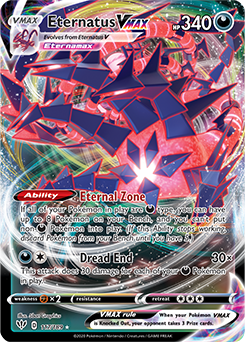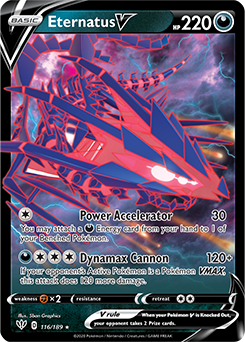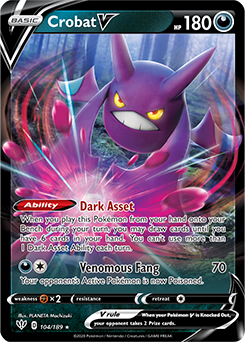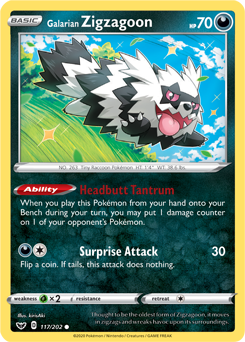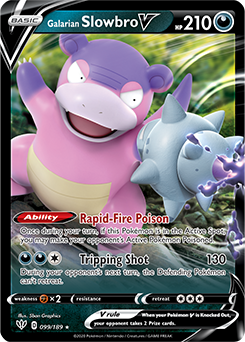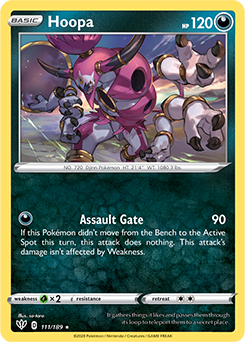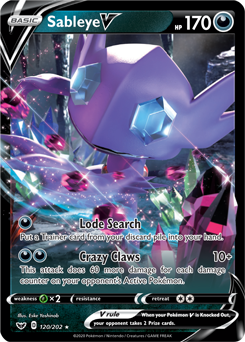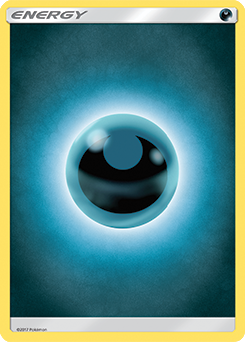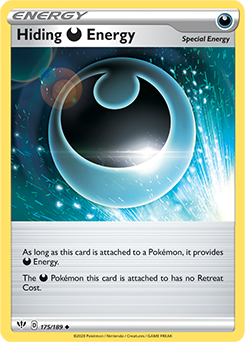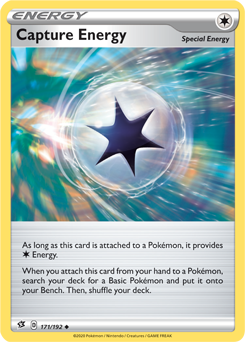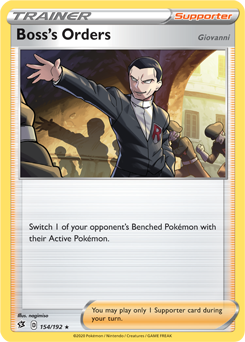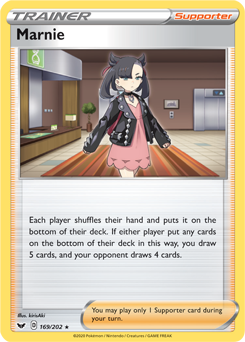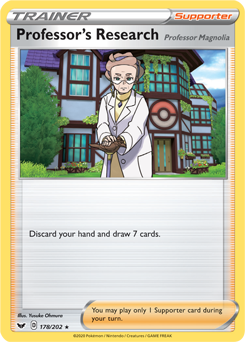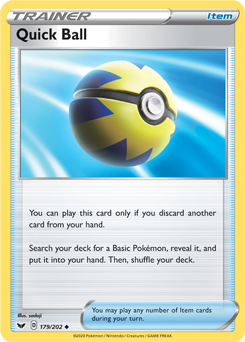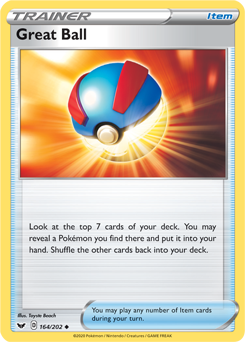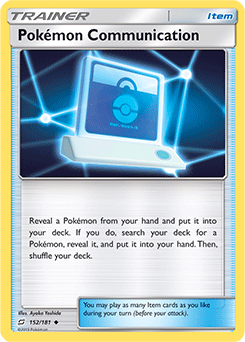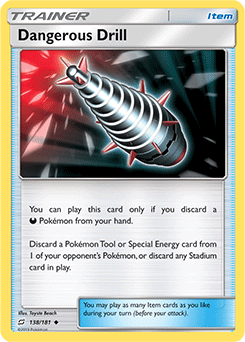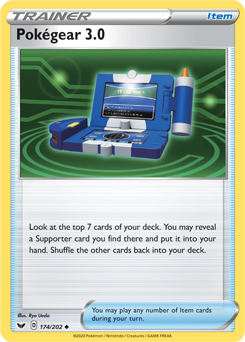By Xander Pero, Contributing Writer
With the release of each expansion, players worldwide begin scouring the new cards to find ways to improve their decks. The game can feel completely changed every three months, with new cards arriving to challenge the victorious decks of expansions past. Some of these strong cards—Quick Ball, Professor’s Research, and Boss’s Orders, to name a few—are flexible and can make their way into most decks to boost consistency. The other category of strong card is the powerful Pokémon that constitutes its own deck, such as Mewtwo & Mew-GX, Zacian V, and Dragapult VMAX. And now, Eternatus VMAX adds itself to that list.

Longtime fans might notice similarities across eras from the Pokémon TCG. Right now, it seems there are plenty of them between Sword & Shield—Darkness Ablaze and XY—Roaring Skies. For example, Eternatus VMAX and Crobat V have similar effects as Mega Rayquaza-EX and Shaymin-EX, respectively. Back then, Mega Rayquaza-EX was a strong deck when paired with Sky Field to boost the maximum damage output. Eternatus VMAX does it one step better, increasing the maximum Bench space to 8 with its Eternal Zone Ability, at the cost of having only Darkness-type Pokémon in play. This is no major obstacle due to Galarian Zigzagoon and Crobat V being so valuable to this deck. These cards add damage and draw power to the already-powerful Eternatus VMAX. Most importantly, they fill the Bench to reach the maximum 270 damage per attack.
Here’s a sample list with inspiration from Isaiah Bradner’s success in recent online tournaments.
Let’s take a closer look at how this deck works and what we can expect from it in the next few months.
The Strategy
It probably comes as no surprise that Eternatus VMAX is the deck’s main attacker. Attaching Energy from your hand to another Pokémon is usually a waste of time because no one else can attack for nearly as much damage. That said, Eternatus V can help you attach Energy to your other Pokémon when you need to. With that in mind, it’s especially important to find an Eternatus V and an Energy card on your first turn so you can attack with Dread End on your second. If you win the coin flip, choose to go first so you can begin attacking with Eternatus VMAX as soon as possible. When going second, you’ll want to attack with Power Accelerator so you can put additional Energy into play. This makes it easier to pivot away from Eternatus VMAX and attack with the tech attackers if you have to: Sableye V and Hoopa.

Hoopa is used to finish off any Pokémon that Dread End can’t Knock Out in a single hit. Because the attack caps out at 270 damage, pings from Galarian Zigzagoon’s Headbutt Tantrum aren’t enough to Knock Out Pokémon VMAX in one hit. Therefore, the best strategy is to swing once with Eternatus VMAX and then pivot into Hoopa with Hiding Darkness Energy (since Dark City provides free retreat only for Basic Darkness-type Pokémon). Sableye V is a two-Prize attacker that can power through Zamazenta V’s Dauntless Shield Ability. It capitalizes on chip damage from Power Accelerator and Headbutt Tantrum. Plus, with its Lode Search attack, Sableye V can also recover Trainer cards in a pinch. Galarian Slowbro V serves a special purpose as an additional damage modifier if you think Hoopa’s damage won’t be quite enough. If possible, pivot into it after a Pokémon is Knocked Out or on the first turn of the game.
Crobat V provides the necessary draw power to set up each turn. In virtually every other deck, it would be a downside to have Crobat V sitting on the Bench, so we would ordinarily include only one or two copies of it. However, since our damage is tied to the number of Darkness-type Pokémon in play, four Crobat V is the clear choice. You can use the Dark Asset Ability only once per turn, so be sure to maximize the number of cards drawn. When given the opportunity, it’s best to put other Darkness-type Pokémon on the Bench and save Crobat V to recover from Reset Stamp or Marnie.
Consistency Is Key
As is the case with most “hit hard and hit fast” decks, linearity is the name of the game. It’s incredibly important to get up and running as soon as possible, which is clear when you examine the deck list. Four Professor’s Research and four Marnie make up the Supporter engine, plus two Pokégear 3.0. Professor’s Research is able to draw the most cards, but Marnie is an essential tool in conserving key resources. You’ll sometimes draw clunky hands with multiple copies of a single card. When that happens, the ideal choice is to play Marnie; it’s even better if the opponent has more than four cards in their hand.

The full allowance of Boss’s Orders is warranted because you need to eliminate an opponent’s threats before they develop. Boss’s Orders is also great for chasing Crobat V or Dedenne-GX, either of which provides two easy Prize cards to close out the game. Finally, Pokégear 3.0 reduces inconsistency by increasing the odds of getting a Supporter card. There aren’t many standout Supporter cards after the format rotation, so Pokégear 3.0 is a solid choice. Moreover, Pokégear 3.0 can help to find a timely Boss’s Orders.
For consistency reasons, the deck runs plenty of Pokémon search cards: Quick Ball, Great Ball, and Pokémon Communication. Quick Ball is the best search card, so that’s maxed out. Great Ball and Pokémon Communication are slightly less effective, but still necessary for grabbing the required numbers of Pokémon from the deck. Great Ball works when you need any Pokémon, whereas Pokémon Communication is nice for grabbing the specific one you need.
Finally,
there’s the Energy. Eleven is a good number because it’s important to always
have one per turn. There’s also the chance of attaching an extra Energy when
attacking with Eternatus V going second. The example list plays one copy of Capture Energy because Dread
End’s attack cost is ![]()
![]() . Hiding Darkness Energy is good to attach to Eternatus VMAX because it
provides free retreat. Basic Darkness Energy is needed to play around Dangerous Drill and for use
with Power Accelerator.
. Hiding Darkness Energy is good to attach to Eternatus VMAX because it
provides free retreat. Basic Darkness Energy is needed to play around Dangerous Drill and for use
with Power Accelerator.
Dark Support
There are a number of other supporting players in this deck to make sure Eternatus VMAX can do its thing, as well as to help you fend off other threats. One of these is Dangerous Drill, an important tech card to slow down your opponent’s progress. Metal Goggles is a pesky Tool card in Lucario & Melmetal-GX / Zacian V decks that must be removed; when combined with Full Metal Wall-GX, a Zacian V with an attached Metal Goggles can’t be Knocked Out by Dread End in a single hit. Dangerous Drill allows you to remove the Metal Goggles, which puts Zacian V in range to be Knocked Out in a couple of different ways: a fully charged Dread End will do the trick, of course, but even if you’re starting the turn with two empty Bench spaces, you can play Galarian Zigzagoon for 10 damage before swinging in for 210. In other matchups, Dangerous Drill removes Special Energy cards. Almost all decks are running Special Energy, and setting the opponent behind a turn can win games on the spot.

Dark City is the Stadium card of choice; it creates immeasurable pivotability—the ease of moving Pokémon to and from your Bench—throughout the game. Our list has four copies to help get Dark City into play as soon as possible. In comparing different pivot effects, Dark City makes more sense than Switch or Scoop Up Net because it’s a Stadium and will stay in play turn after turn.
One possible revision to our deck list would be to cut Dark City and a few other cards to add Black Market Prism Star and Switch. Viridian Forest is another playable Stadium because it reduces hand size before using Dark Asset and ensures Energy attachments. However, Dark City halves the deck space that would otherwise be allocated for Switch and Stadiums by combining their effects into one card. In that sense, Dark City frees up one or two deck slots to be allocated elsewhere for more impactful cards.
Favorable Matchups
Eternatus VMAX can easily deal with decks that aren’t able to disrupt its strategy. One example of this is Centiskorch VMAX. It takes time for its damage to ramp up and doesn’t have a way to easily Knock Out an Eternatus VMAX. After you’ve swung once with Dread End, be sure to pivot into Hoopa to finish the work. If you can’t, don’t be afraid to use Boss’s Orders to heavily damage another Centiskorch VMAX. Delaying the Knock Out plays around Reset Stamp and uses damage more efficiently. I mentioned earlier that it is usually advantageous to go first in the game, but keep in mind that if your opponent is playing a version revolving around Green’s Exploration, it’s beneficial to choose to go second.

Another good matchup is Arceus & Dialga & Palkia-GX / Zacian V. While the opponent has to waste two turns loading up an Altered Creation-GX, you can begin attacking immediately. The best way to win this matchup is to actively target your opponent’s loaded attackers with Boss’s Orders. Zamazenta V can make this matchup slightly more problematic, but still favorable.
The final matchup to discuss is the mirror match. You can win in three attacks by Knocking Out three Pokémon V, but the realistic outcome is four attacks. If you’re able to use Boss’s Orders for two Prize cards rather than swinging into an Eternatus VMAX, that’s usually the best play. Remember that it’s possible to interweave Hoopa, a single-Prize attacker, to finish off a damaged Pokémon, while keeping your multiple-Prize Pokémon out of harm’s reach.
Problematic Opponents
Eternatus VMAX can swing for plenty of damage, but some decks have ways around that damage. The current biggest counter to Eternatus VMAX is Zamazenta V: Its Dauntless Shield Ability prevents damage done to it by Pokémon VMAX, meaning that you’ll have to attack with everything else in order to get through it. This is a major problem because no other attacker in your deck does nearly as much damage. On top of that, Zamazenta V is usually played alongside Lucario & Melmetal-GX and Zacian V, so Full Metal Wall-GX reduces your damage output by 30—and Metal Goggles, while manageable with Dangerous Drill, brings the total damage reduction to 60. Your secondary attackers will struggle to accumulate a Knock Out, especially through healing from Mallow & Lana.

As it stands, there isn’t a solution to this issue. Spiritomb is one consideration, but it’s a fragile attacker and not worth using in any other matchups. Even so, it would require multiple Spiritomb to even have a chance of winning. Mallow & Lana is quick to stifle any residual damage.
The good news is that decks with only one copy of Zamazenta V, and those that don’t have as many defensive cards, may be manageable with alternate attackers. It’s also possible to take all six Prize cards with Boss’s Orders if given the opportunity.
Another difficult card to face is Inteleon VMAX because of its first attack, Hydro Snipe. When paired with Team Yell Grunt, your opponent can force all the Energy attached to your Eternatus VMAX back into your hand, preventing you from attacking. Your best course of action is to begin loading up a backup Eternatus VMAX on the Bench. Even then, it’s difficult because you’d need to attach a Hiding Darkness Energy to the Active Eternatus VMAX to retreat it.
There’s a solution to this: combine Turbo Patch, which can accelerate Energy from the discard pile onto one of your Basic Pokémon, with Weavile-GX and its Shadow Connection Ability to move that Energy onto your Active Eternatus VMAX. Keep in mind that this Ability can move only basic Darkness Energy. While these options are clunky, they may be necessary if you expect Inteleon VMAX at your next tournament.
In my opinion, Eternatus VMAX is the strongest card to come out of the recent Sword & Shield—Darkness Ablaze expansion. Its powerful attacks and incredible draw support make it a top contender in future tournaments. As more Darkness-type Pokémon are released, Eternatus VMAX only gains more options for attackers and support Pokémon. Give it a try, and best of luck at your next tournament!
For more competitive Pokémon Trading Card Game content, continue reading Pokemon.co.uk/Strategy.

